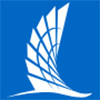Texas A&M University-Corpus Christi is a public university with many characteristics. Here is a detailed introduction about it:
School Profile
History of the school: The school was founded in 1947 and has a long history of running schools and rich educational experience.
Geographic location: Located in the beautiful and historic city of Corpus Christi in southern Texas, the city is a seaport city and a world-famous tourist resort. The school is located on its own island and is called the "university on the island". It is very convenient to go to the beaches on the Gulf Coast from the campus. The campus is surrounded by rich natural landscapes and a mild climate. There are about 255 sunny days throughout the year, with an average temperature of 15 degrees Celsius in winter and 29 degrees Celsius in summer.
Campus size: The campus covers an area of 364 acres, providing students with a relatively wide learning and living space.
Student size and composition: In the fall of 2022, the school has a total of 7,824 undergraduates. The student body is diverse and comes from different cultural backgrounds.
Overall ranking: In the 2024 U.S. News & World Report Best Colleges ranking, the school ranked 395-435 among national universities and 212-227 among public schools.
Professional settings
The school has 6 colleges, including the School of Business, the School of Education and Human Development, the College of Arts and Sciences, the University College, the School of Nursing and Health Sciences, and the School of Science and Engineering. It offers more than 80 popular academic programs and has established the A&M-Corpus Christi Honors Program, covering many fields. :
School of Business: Undergraduate majors include accounting, business, economics, finance, general business, management, management information systems, marketing, etc.; graduate majors include accounting, business, etc.
School of Education and Human Development: Undergraduate majors include subject research, general education, bilingual education, mathematics, special education, kinesiology, vocational training and development, etc.; graduate majors include counseling, curriculum and instruction, early childhood education, educational administration, educational technology, extensive reading, secondary education, special education, etc.
College of Arts and Sciences: Undergraduate majors include art, media, criminal justice, economics, English, history, music, political science, psychology, sociology, Spanish, drama, etc.; graduate majors include art studio, English, history, subject research, psychology, public administration, etc.
School of Nursing and Health Sciences: undergraduate majors are health sciences and nursing, and graduate majors are also nursing.
School of Science and Engineering: undergraduate majors include biology, biomedicine, forensic medicine, clinical laboratory science preparatory courses, professional preparatory courses, chemistry, computer science, electrical engineering technology, environmental science, geographic information science, geology, mathematics, mechanical engineering technology, etc.; graduate majors include biology, computer science, environmental science, fish pond management, mathematics, etc.
Faculty
The school's teacher-student ratio is 1:19, teachers not only have rich professional knowledge, but also often conduct one-on-one practice and research with students, providing students with good learning guidance and research opportunities.
Teaching Features
Rich practical teaching: Many professional courses emphasize practical operations. Through experiments, internships, projects, etc., students can apply theoretical knowledge to practice and improve their problem-solving ability and professional quality.
Small class teaching: Some courses adopt small class teaching mode, with relatively small number of students in each class. Teachers can pay better attention to the learning progress of each student, provide students with personalized guidance and feedback, promote interaction and communication between teachers and students, and improve teaching effectiveness.
Unique courses and research opportunities: As the first university in the United States to offer geographic information science as a separate course, the school is groundbreaking in teaching and research in related fields. In addition, the school's unique geographical location also provides students majoring in marine-related majors with rich practical and research opportunities, such as coastal shipping and environmental research.
Campus Life
Student Organizations and Clubs: The school has a variety of student organizations and clubs, covering academic, cultural and artistic, sports and other aspects. Students can join the corresponding clubs according to their interests and hobbies, participate in various activities, expand interpersonal relationships, enrich extracurricular life, and cultivate teamwork spirit and leadership.
Sports Activities: The school has a rich variety of sports programs, and students have the opportunity to participate in various sports competitions, show sports competitive spirit, and enhance physical fitness.
Campus Facilities: The campus has modern classrooms equipped with computer equipment. The university center also has restaurants, bookstores, post offices, banks and leisure areas. The computer room is equipped with various personal computers, scanners, laser printers, etc., which provide convenience for students' study and life.
Outdoor Recreation: The school has its own beach, where students can engage in water activities such as surfing and kayaking, and can also travel along the campus's hiking and cycling trails to enjoy the natural beauty and relax.
Tuition Fees and Scholarships
Tuition Fees: Tuition for in-state students is $10,533 per year, and tuition for out-of-state students is $23,727 per year. US dollars, dormitory fees are about US$7,300 per year, and meal fees are about US$2,000 per year.
Scholarships: The school provides generous scholarships for international students. Students who apply for scholarships only need to pay local tuition fees and enjoy the same low tuition fees as local students, which greatly reduces the financial burden of students.
-

Harvard University
-

Massachusetts Institute of Technology
-
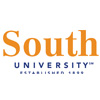
South University
-

University of West Georgia
-
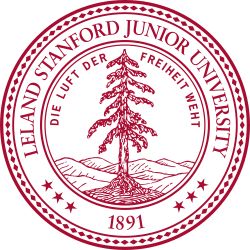
Stanford University
-

Northwest Nazarene University
-
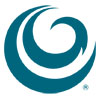
Hawaii Pacific University
-
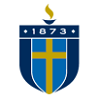
Shorter University
-

Nova Southeastern University
-
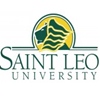
Saint Leo University
-

Mesoamerican University
-

Istmo University
-

Mariano Galvez University of Guatemala
-

Regional University of Guatemala
-

Galileo University
-

Francisco Marroquín University
-

Rafael Landívar University
-

University of the Valley of Guatemala
-

University of San Carlos of Guatemala
-

Technological Institute of Tlaxcala Plateau
-

Golfo University
-

Technological University of South Sonora
-

Technological University of Huejotzingo
-

Tizimín Institute of Technology
-

Chilpancingo Institute of Technology

